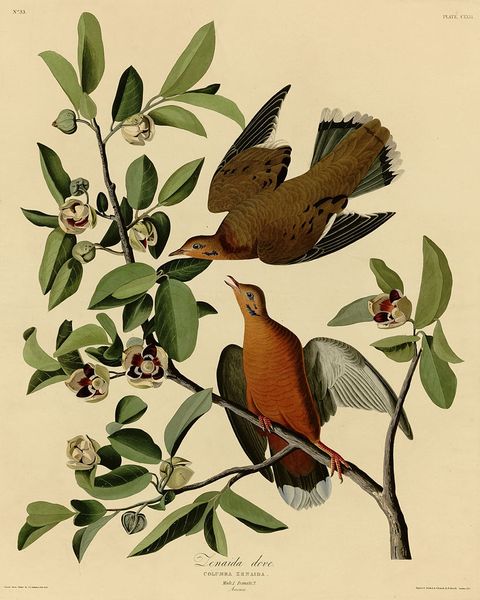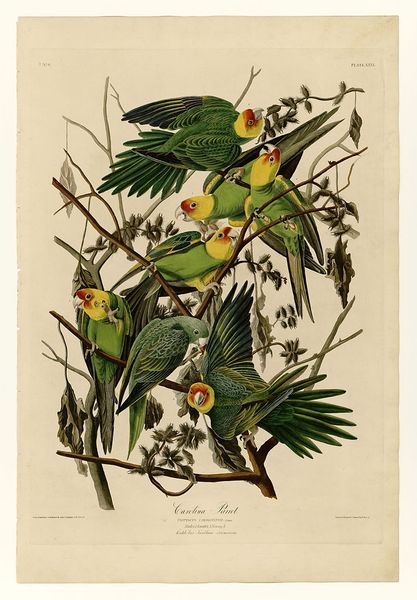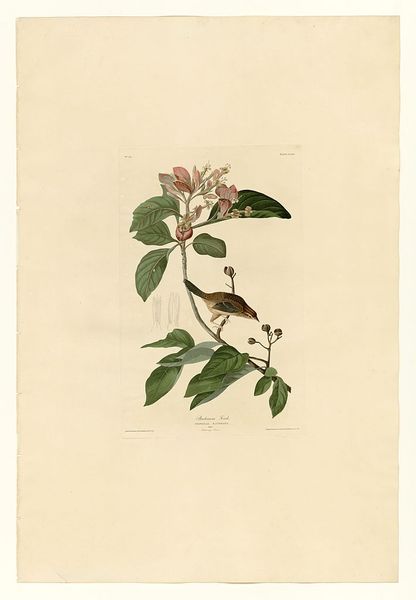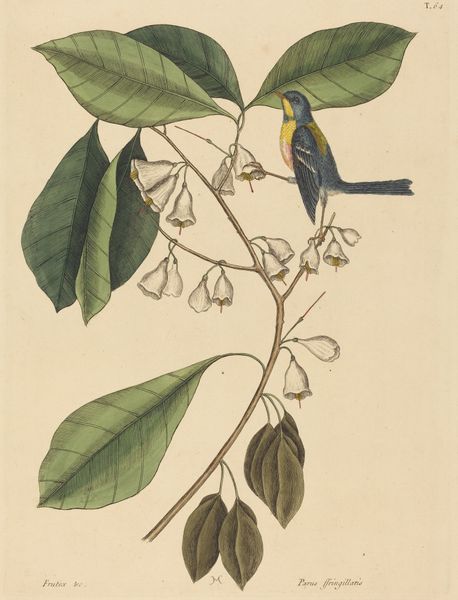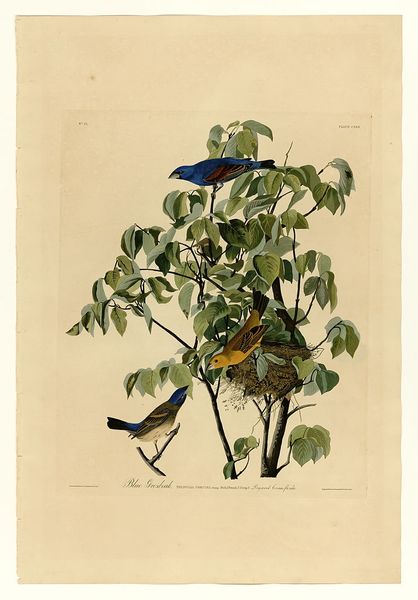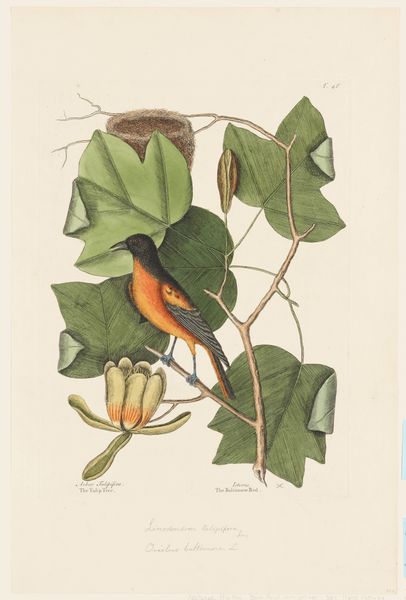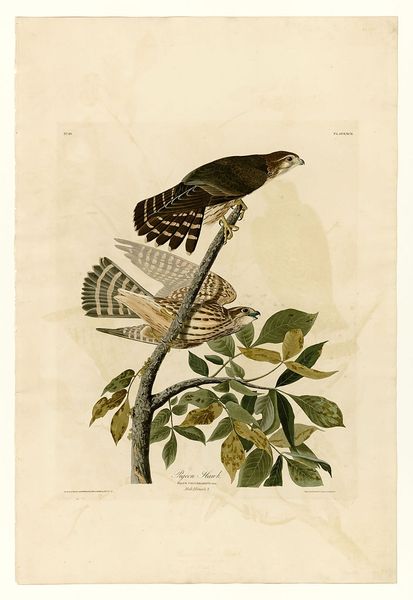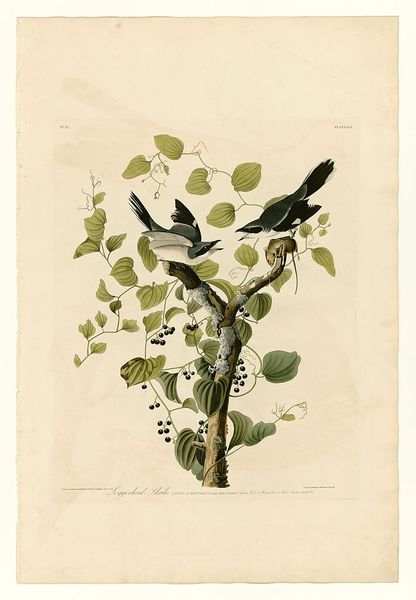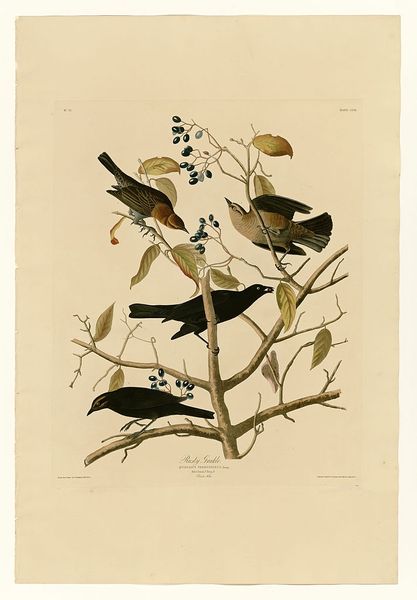
drawing, print, watercolor
#
drawing
# print
#
landscape
#
watercolor
#
naive art
#
watercolour illustration
#
botanical art
#
realism
Copyright: Public domain
Editor: This is Plate 177 from Audubon's *Birds of America*, showcasing white-crowned pigeons rendered in watercolor, drawing and printmaking. I’m struck by the almost photographic detail in the birds' plumage juxtaposed against the flatness of the surrounding flora. How do you approach interpreting this piece? Curator: Considering Audubon through a materialist lens, it’s essential to unpack the means of its production. These prints were part of a large-scale, industrialized project. Consider the paper, the pigments, the engravers' labor—these weren't simply artistic choices, but products of a complex system of resource extraction and skilled craftsmanship. What impact might the material origins have on our understanding? Editor: That’s a side of Audubon I hadn’t fully considered before. So, it's less about a romanticized view of nature and more about understanding the mechanisms that allowed the creation of these illustrations? Curator: Exactly. We need to think about the relationship between Audubon's project, resource consumption, and even the colonial project's impact on the very landscapes he documented. The artistry isn't divorced from the materiality; it's inextricably linked. Editor: The detail almost hides the impact of it all; all that’s needed to get there! It’s also interesting how this contrasts with, say, folk art, where the materials might be simpler, but more overtly connected to their source. Curator: Precisely. Even the ‘naive art’ elements you mentioned earlier highlights this tension, no? How does the presentation style affect our consumption of the subject matter? Is it meant to seem less complicated and contrived than it really is? Editor: This gives me a lot to think about in terms of art and its relation to not only artistic expression, but to labor. Curator: Indeed, and perhaps helps us look closer not only at *what* is depicted, but *how* it got to be depicted in the first place.
Comments
No comments
Be the first to comment and join the conversation on the ultimate creative platform.

